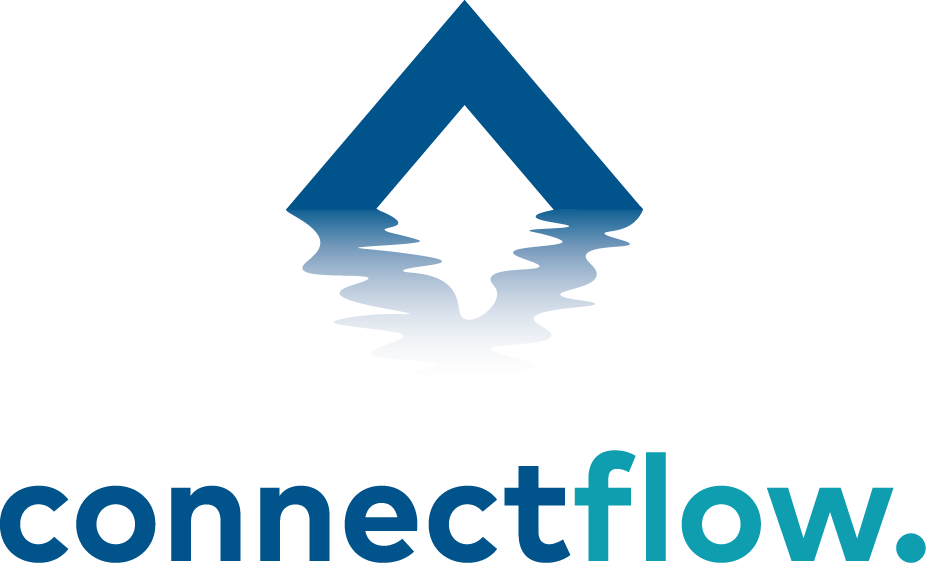Project: Hydrogeological Modelling for the Forsmark Spent Nuclear Fuel Repository
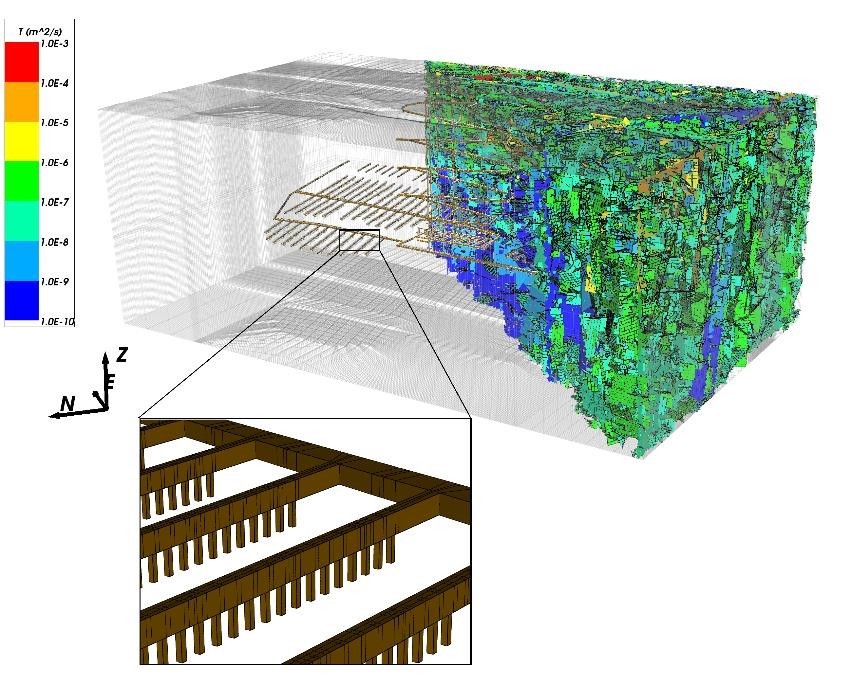
- Location: Sweden
- Client: Swedish Nuclear Fuel and Waste Management Company [SKB]
- Schedule: 2008-2019
Description: Amentum provided continuous support to SKB through their program of phased site investigations alongside the development and implementation of their safety assessment methodology. Evaluation of the long-term integrity of the KBS-3 engineered barrier system required quantification of the evolution of groundwater flow and composition around deposition volumes, while assessment of consequences of potential radionuclide releases required analysis of groundwater pathways and identification of appropriate biosphere areas.
To meet these requirements, Amentum devised a novel multi-scale modelling methodology, implemented in Amentum' ConnectFlow software, to assess details of flows in the fractured host rock around the repository, as well as describe the regional-scale evolution of groundwater flow and hydrogeochemical composition. The methodology was illustrated for regulatory review early in the program (SKB R-04-61), applied to early site investigation data for SR-Can (R-06-98) and in the SR-Site assessment (SKB R-09-20). This provided important input to the safety assessment aspects of scenario development, near-field and far-field modelling, hydrogeochemical evolution and biosphere modelling during temperate and glacial climate conditions.
More recent work has involved methodology development and assessment of the implications of engineering design decisions.
Project: Hydrogeological Modelling for the Hypothetical SFL Repository
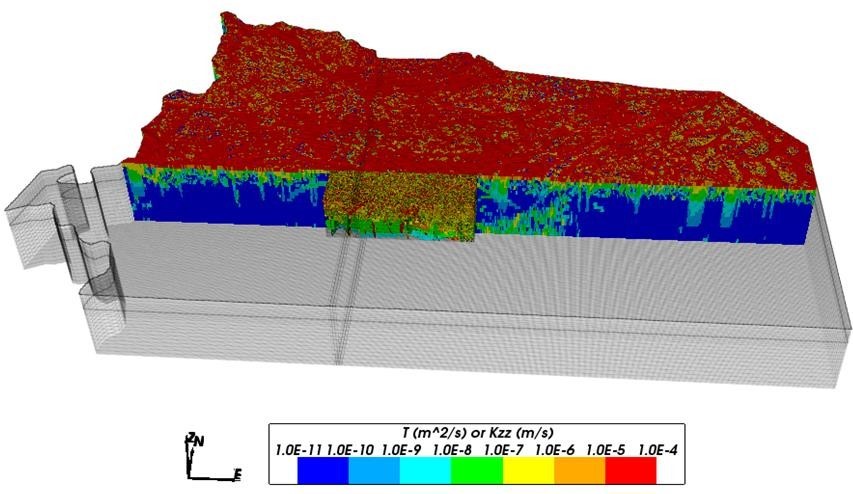
- Location: Sweden
- Client: Swedish Nuclear Fuel and Waste Management Company [SKB]
- Schedule: 2015-2016
Description: Amentum carried out the groundwater flow, transport and hydrogeochemical evolution calculations as part of the preliminary safety analysis of SKB's hypothetical SFL facility for long-lived low and intermediate level radioactive waste, located at a depth of 300- 500 m in fractured crystalline rock. As an illustration, models were based on fracture data from Laxemar, a former candidate site for a spent nuclear fuel repository.
The long-term evolution of groundwater flow and hydrogeochemistry was simulated with ConnectFlow in a regional-scale, upscaled equivalent continuous porous medium (ECPM) model. This model was in turn used to provide boundary conditions and the distribution of salinity for a more detailed site-scale model that considered the groundwater flow and transport between the two repository vaults and the biosphere, using a combined discrete fracture network and ECPM concept. This model contained around 2.2 million fractures and 7.3 million ECPM cells.
The site-scale modelling also assessed the effects of water supply wells on groundwater flow and the potential for contaminants from the disposal vaults to enter the wells.
Project: Hydrogeological Modelling for the Olkiluoto Spent Nuclear Fuel Repository
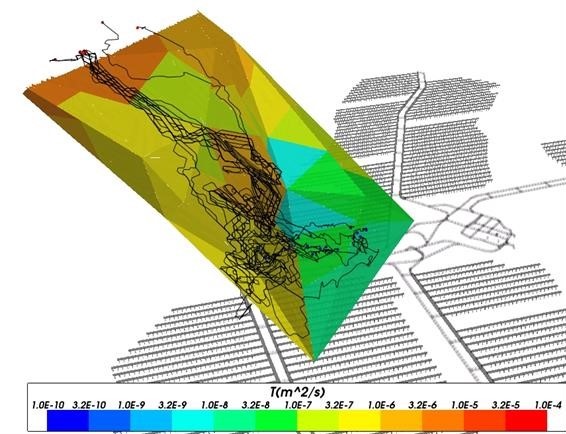
- Location: Finland
- Client: Posiva Oy
- Schedule: 2010-2019
Description: Amentum developed ConnectFlow hydrogeological models to support the description of the near-field release models and assessment of failure scenarios, radionuclide transport calculations of the groundwater pathway, and the long-term evolution of groundwater flow and composition under different future climate situations.
Other studies evaluated: the performance of the closure design for tunnel backfills, hydraulic plugs, and borehole seals; operational procedures for selecting the most favourable disposal locations against risks of elevated post-closure flows, saline water upconing, effects of cement leachate on buffer performance, and shear movement on large fractures.
More recently Amentum supporting Posiva in developing a new discrete fracture network (DFN) methodology and applying it as part of Posiva's 2018 site-descriptive modelling project. This methodology is underpinned by the statistical analysis of large amounts of site geological data and includes an extensive assessment of parametric and conceptual uncertainties. The resulting models (upscaled to an equivalent continuous porous medium) were used by Amentum to calculate the long-term evolution of hydrogeochemical composition over temperate and glacial cycles as part of Posiva's TURVA 2020 safety assessment.
Project: Geological and hydrogeological modelling of the LLWR
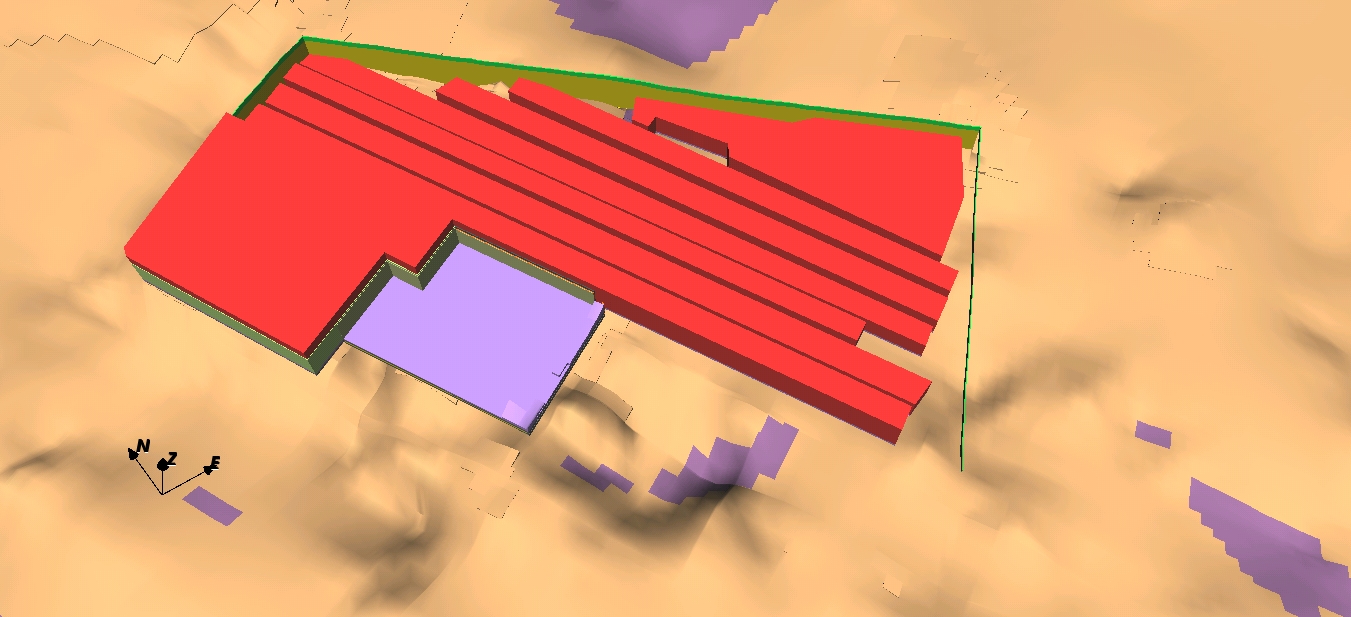
- Location: United Kingdom
- Client: LLW Repository (NWS)
- Schedule: 2010-2019
Description: Amentum has been conducting hydrogeological modelling for the LLW Repository. for a number of years, including extensive site-scale hydrogeological modelling studies in support of the 2011 Environmental Safety Case (ESC) using ConnectFlow. These studies fed into the assessment models of the groundwater pathway that formed one of the cornerstones of the 2011 ESC. Since the 2011 ESC, the work has expanded to include an updated understanding of the underlying Quaternary deposits, using modern scientific techniques.
This has been conducted together with geological modelling of the area using the Leapfrog modelling software, which has the ability for systematic and rapid creation of 3D geological models. This has led to an improved understanding of the geology, and hence the hydrogeology, of the area. The use of Leapfrog allows the geological model to be closely linked to the hydrogeology, which represents the geological surfaces and engineered features of the LLWR.
The hydrogeology is modelled in ConnectFlow, using a continuous porous media model, and calibrated against observed groundwater heads. The hydrogeological model is used to characterise the groundwater pathways, both in the present and at future post-closure times, and provides flows and water level predictions to the groundwater pathway assessment models.
Project: Modelling the Prototype Repository Experiment at the Äspö Hard Rock Laboratory
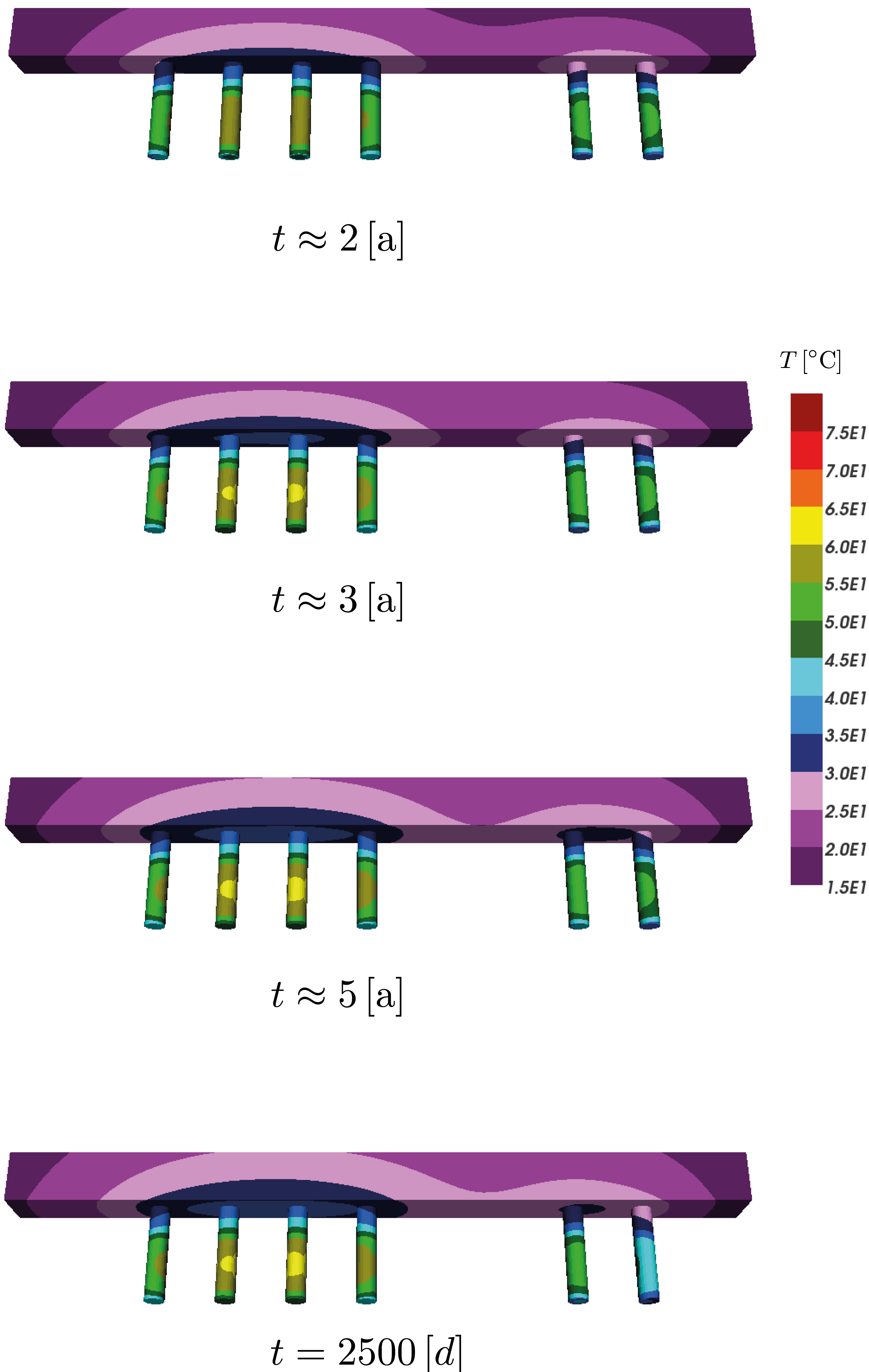
- Location: Sweden
- Client: Radioactive Waste Management [RWM]
- Schedule: 2015-2019
Description: Through modelling the Prototype Repository Tunnel, a methodology was developed to model coupled thermal-hydraulic processes and the interaction between rock and bentonite at the scale of a single deposition tunnel whilst respecting the underlying heterogeneity of the rock.
One of the challenges of such modelling is that the numerical models required to simulate the evolution of hydraulic processes and temperature are at different spatial scales; resaturation requires detailed local-scale models whereas thermal evolution typically requires much larger domains.
ConnectFlow was used to model the coupled thermal and hydraulic processes in a three-dimensional domain, following this approach: (1) Develop a DFN model of the host-rock consistent with the available data from its characterisation, in the vicinity of the Prototype Repository Tunnel at the Äspö HRL. (2) Identify suitable realisations of the DFN model by the calculation of inflows to the deposition holes and tunnels pre-installation of the canisters, bentonite buffer and tunnel backfill through explicit simulation of the groundwater flow through the connected fracture network.
Publications
Our team members often share their expertise. Below is a selection of recent papers, reports and conference presentations that we have authored and contributed to:
|
Title |
Date |
Reference |
|---|---|---|
|
Thermal hydraulic and mechanical modelling of the full-scale in situ test (FISST). |
2023 |
Engineering Geology (322), 107165 |
|
Capability for Hydrogeochemical Modelling within Discrete Fracture Networks. |
2022 |
Energies 2022, 15(17), 6199 |
|
Discrete fracture network simulations in support of hydraulic rejection criteria for deposition holes |
2021 |
Posiva SKB Report 11 |
|
Recovering the Effects of Subgrid Heterogeneity in Simulations of Radionuclide Transport Through Fractured Media |
2021 |
Front. Earth Sci. doi: 10.3389/feart.2020.586247 |
|
Modelling solute transport and water-rock interactions in discrete fracture networks |
2020 |
Posiva working report 2020-1 |
|
Developing 3D geological and hydrogeological models for the Low Level Waste Repository site, west Cumbria, UK |
2020 |
Quarterly Journal of Engineering Geology and Hydrogeology. 2020a |
|
Investigating the thermo-hydromechanical evolution of a UK geological disposal facility due to disposal of high heat-generating wastes |
2020 |
NDA Report no. RWM/Contr/20/006 |
|
Simulating flow, transport and hydrogeochemical processes within fracture networks |
2019 |
Poster, AGU Fall Meeting 2019, San Francisco, USA |
|
Groundwater modelling using the ConnectFlow® software suite |
2019 |
Poster, Groundwater Modeller's Forum, Birmingham, UK |
|
Modelling the Prototype Repository |
2018 |
Geological Society, London, Special Publications, 482, 241-260 |
|
Discrete Fracture Network Modelling (Version 3) in Support of Olkiluoto Site Description 2018 |
2018 |
Posiva WR 2017-32, Posiva Oy |
|
Hydrogeochemical Modelling in Fracture Networks |
2018 |
ARMA-DFNE-18-0240 |
|
The Predictive Capability of Conditioned Simulation of Discrete Fracture Networks using Structural and Hydraulic Data from the ONKALO Underground Research Facility, Finland |
2017 |
Poster, AGU 2017 Fall Meeting, New Orleans, USA |
|
Understanding flow of the upper groundwater around the LLWR |
2016 |
Amec Foster Wheeler report, 202539/002 (email only) |
|
Future evolution of groundwater composition at Forsmark during an extended temperate period |
2015 |
SKB R-14-26, Svensk Kärnbränslehantering AB |
|
Multi-scale groundwater flow modeling during temperate climate conditions for the safety assessment of the proposed high-level nuclear waste repository site at Forsmark, Sweden |
2014 |
Hydrogeology Journal (2014) 22: 1233-1249. |
|
Groundwater flow and reactive transport modelling in ConnectFlow |
2014 |
SKB R-14-19, Svensk Kärnbränslehantering AB |
|
Approaches and algorithms for groundwater flow modeling in support of site investigations and safety assessment of the Forsmark site, Sweden |
2013 |
Journal of Hydrology, Volume 500, 13 Sept 2013, Pages 200-216 |
|
The LLWR 2011 ESC: Hydrogeology |
2011 |
LLWR/ESC/R(11)10022. LLWR. Drigg. |
|
Hydrogeological Conceptual Model for the LLWR 2011 ESC |
2011 |
Serco Report SERCO/TCS/E003632/008 Issue 2 |
|
Groundwater flow modelling of periods with temperate climate conditions - Forsmark. |
2010 |
SKB R-09-20, Svensk Kärnbränslehantering AB |
